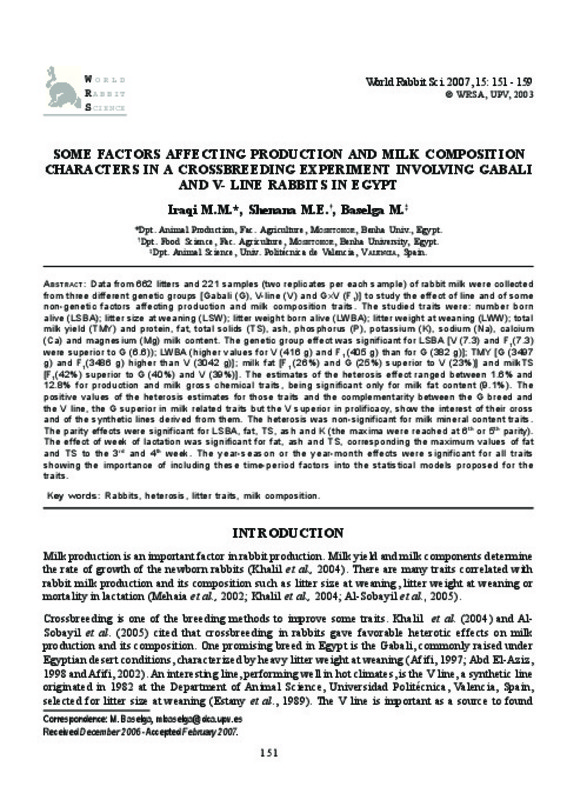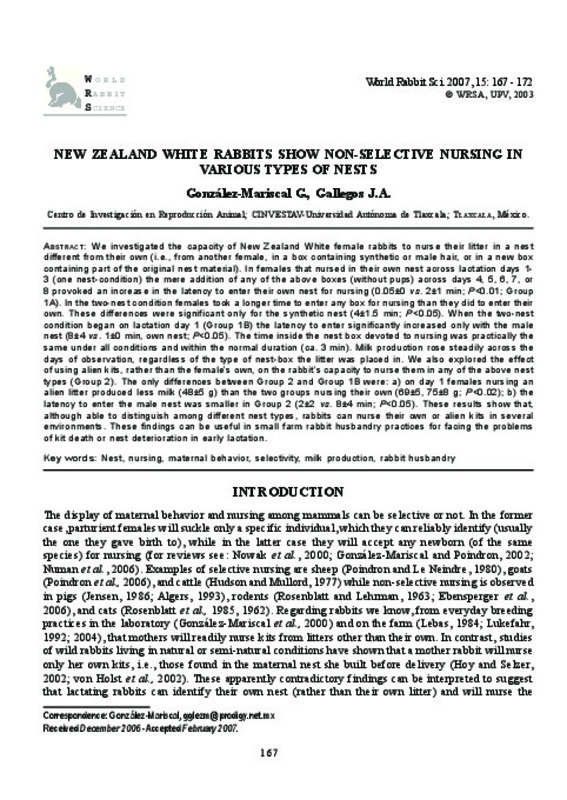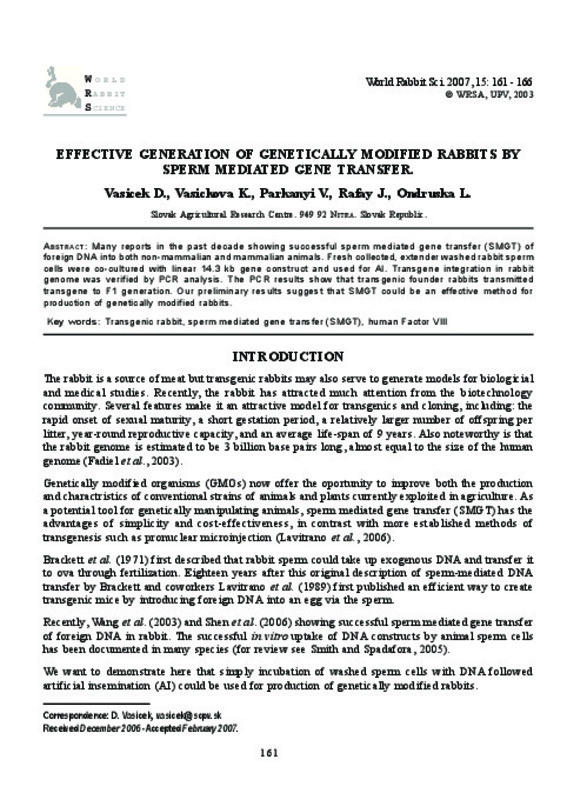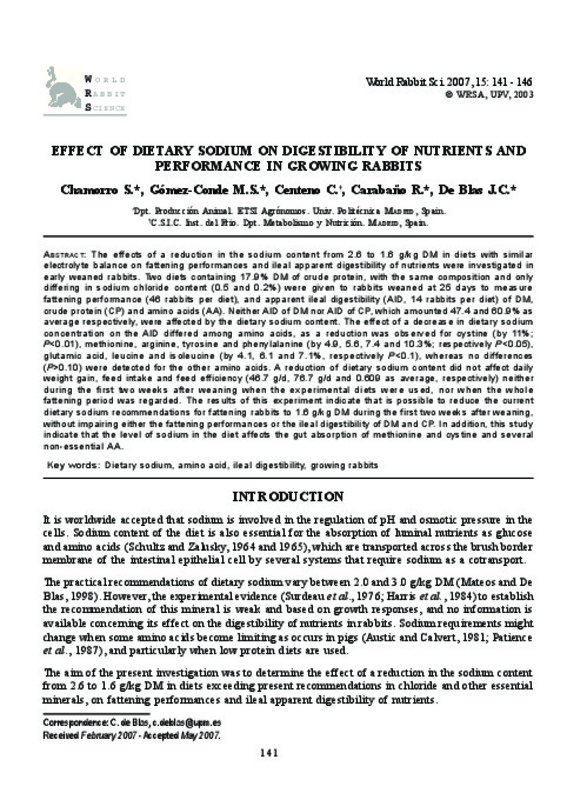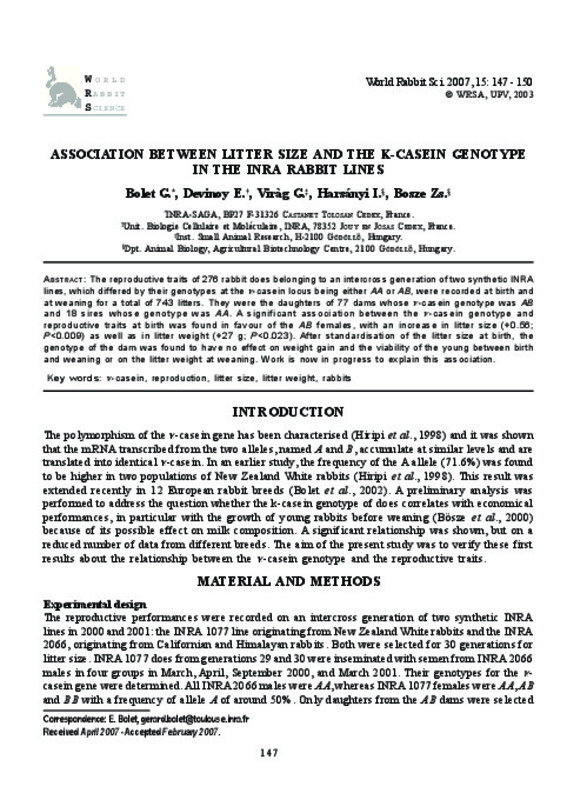- RiuNet repositorio UPV
- :
- Investigación
- :
- Material investigación. Editorial UPV
- :
- Revistas UPV. Editorial UPV
- :
- World Rabbit Science
- :
- World Rabbit Science - Vol. 15 (3)-2007
JavaScript is disabled for your browser. Some features of this site may not work without it.
Refinar
World Rabbit Science - Vol. 15 (3)-2007
Tabla de contenidos
- Alternatives to antibiotic growth promoters in rabbit feeding: a review.
- Effect of dietary sodium on digestibility of nutrients and performance in growing rabbits.
- Association between litter size and the k-casein genotype in the INRA rabbit lines.
- Some factors affecting production and milk composition characters in a crossbreeding experiment involving Gabali and V- line rabbits in Egypt.
- Effective generation of genetically modified rabbits by sperm mediated gene transfer.
- New Zealand White rabbits show non-selective nursing in various types of nests.



